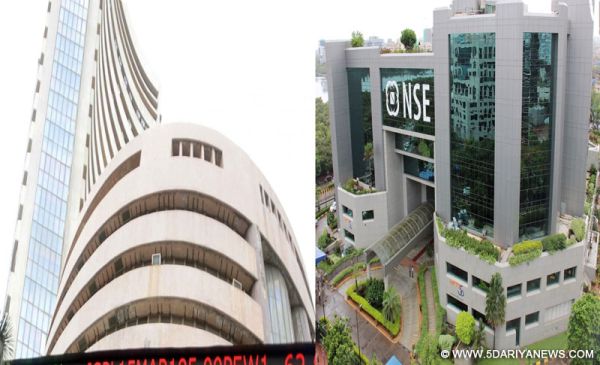
by admin | May 25, 2021 | Banking, Economy, Markets, News
 By Rohit Vaid,
By Rohit Vaid,
Mumbai : The central bank’s upcoming monetary policy review, combined with the direction of foreign fund flows are expected to drive investors’ sentiments in the equity markets in the coming week.
Market observers opined that other factors such as the rupee’s movement against the US dollar, global crude oil prices and further economic reforms will impact investors’ risk-taking appetite.
“RBI is scheduled to meet on December 6, 2017, and is expected to leave interest rates unchanged as inflation is inching up due to firming crude oil prices, increased financial market volatility and fiscal issues,” D.K. Aggarwal, Chairman and Managing Director of SMC Investments & Advisors, told IANS.
“Nifty is expected to trade in the range of 10,000-10,300 points levels, whereas Bank Nifty is expected to trade between 24,900-25,600 points levels.”
On technical levels, Deepak Jasani, Head – Retail Research, HDFC Securities, predicted a continued “short-term downtrend” for the Nifty after four consecutive sessions of correction.
“Nifty could now head towards the next supports of 10,050-10,094 points early next week,” Jasani said.
“Further downsides are likely if these supports fail to hold. Any pullback rallies could find resistance at 10,230 points.”
In its last review, the RBI had kept the key lending rate unchanged.
According to Devendra Nevgi, Founder and Principal Partner, Delta Global Partners, apart from the RBI’s rate decision, investors will also look to the language and cues on the future inflation scenario.
“Though the consensus is that RBI may not cut the repo rates, the language needs more attention if RBI turns more hawkish on sustained inflation and how the members’ votes split,” Nevgi told IANS.
Macro-data — Nikkei Services PMI — along with passenger vehicle sales will also determine the trajectory of the key indices on Monday, December 4.
Besides the macro-economic data points, volatility in the rupee’s movement against the US dollar and the direction of foreign fund flows could make investors nervous.
On the currency front, the rupee on Friday strengthened by 23 paise to close at 64.47 against the US dollar.
“Next week, the US dollar may react positively to the news that US Senate has approved the tax bill,” Anindya Banerjee, Deputy Vice President for Currency and Interest Rates with Kotak Securities, told IANS.
“As a result, USD/INR may inch higher towards 64.70-80 levels on spot with 64.30-35 acting as strong support. A range of 64.30 to 64.80 is expected over the near term.”
In terms of investments, provisional figures from the stock exchanges showed that foreign institutional investors (FIIs) offloaded stocks worth Rs 2,772.56 crore during the week ended November 27-30.
Last week, continuous outflows of funds, along with growing concerns over the country’s widening fiscal deficit as well as rising crude oil prices pulled the two key equity indices — S&P BSE Sensex and NSE Nifty 50 — lower.
Consequently, the barometer 30-scrip Sensex of the Bombay Stock Exchange (BSE) plunged 846.3 points, or 2.51 per cent to 32,832.94 points.
Similarly, the broader Nifty 50 of the National Stock Exchange declined by 267.9 points, or 2.58 per cent, to close at 10,121.80 points.
(Rohit Vaid can be contacted at rohit.v@ians.in)
—IANS
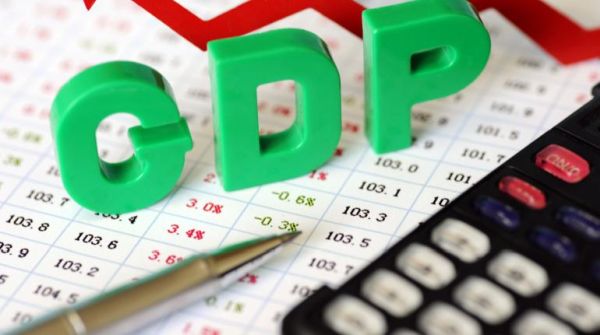
by admin | May 25, 2021 | Economy, Markets, News
 Mumbai : The equity markets turned bearish during the week on growing concerns over the country’s widening fiscal deficit as well as rising crude oil prices and persistant selling by foreign institutional investors (FIIs).
Mumbai : The equity markets turned bearish during the week on growing concerns over the country’s widening fiscal deficit as well as rising crude oil prices and persistant selling by foreign institutional investors (FIIs).
According to market observers, upbeat gross domestic product (GDP) growth data for the second quarter of 2017-18 failed to cheer the equity markets as investors remained cautious ahead of major events in the upcoming week.
The barometer 30-scrip Sensitive Index (Sensex) of the Bombay Stock Exchange (BSE) dropped 846.3 points, or 2.51 per cent, to close the week at 32,832.94 points.
The broader Nifty50 of the National Stock Exchange (NSE) declined by 267.9 points, or 2.58 per cent, to close at 10,121.80 points.
“Markets ended sharply lower this week after consolidating in a range for major part of the week. Selling emerged in the last two sessions of the week,” Deepak Jasani, Head – Retail Research, HDFC Securities, told IANS.
D.K. Aggarwal, Chairman and Managing Director of SMC Investments and Advisors, said the domestic market got spooked by fiscal deficit readings ahead of expiry of November contracts.
“To note, India’s fiscal deficit at the end of October hit 96.1 per cent of the budget estimate for the fiscal year ending in March 2018,” Aggarwal told IANS.
“In the week gone by, the Dow industrials pushed past the 24,000 mark for the first time on the back of tax-reform optimism amid the latest batch of economic data pointing to a pickup in global and domestic demand. In a recent meeting, OPEC (Organisation of the Petroleum Exporting Countries) members agreed to extend curbs on output to the end of next year,” he added.
Provisional figures from the stock exchanges showed that domestic institutional investors bought scrips worth Rs 1,614.89 crore.
FIIs continued to remain net sellers and sold stocks worth Rs 2,772.56 crore during the week.
“Widening fiscal deficit and rising crude oil prices concerns continued to hurt sentiment. Investors turned cautious ahead of major events in the month ahead — the Reserve Bank of India policy, Federal Open Market Committee meet and Gujarat assembly elections,” said Arpit Jain, AVP at Arihant Capital Markets.
Figures from the National Securities Depository (NSDL) revealed that foreign portfolio investors (FPIs) invested in equities worth Rs 3,273.34 crore, or $506.06 million, from November 27-30.
On the currency front, the rupee strengthened by 23 paise to close at 64.47 against the US dollar from its last week’s close at 64.70.
The currency market was closed on December 1 on the occasion of Id-e-Milad.
The top weekly Sensex gainers were: Maruti Suzuki (up 1.41 per cent at Rs 8,607.55); Coal India (up 0.42 per cent at Rs 272.25); and NTPC (up 0.42 per cent at Rs 181.15).
The losers were: Tata Motors (down 6.07 per cent at Rs 399.15); State Bank of India (down 5.93 per cent at Rs 312.55); Infosys (down 5.09 per cent at Rs 958.50); Tata Motors (DVR) (down 4.92 per cent at Rs 228.85); and Adani Ports (down 4.46 per cent at Rs 386.90).
—IANS
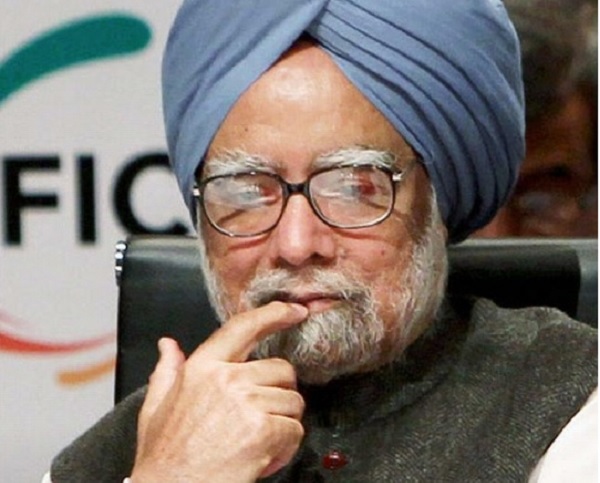
by admin | May 25, 2021 | Economy, Markets, News, Politics

Manmohan Singh
Surat : Former Prime Minister Manmohan Singh on Saturday said it was too early to conclude that the economic slowdown has reversed as the 6.3 per cent growth rate in the July-September quarter did not take into account the small and medium sector which suffered huge losses in the aftermath of demonetisation and hasty implementation of GST.
He welcomed the 6.3 per cent growth rate in the July-September quarter but cautioned that it was too early to conclude that the economy has recovered.
“(It) is too early to conclude that this represents a reversal of the declining trend observed in the previous five quarters. Some economists believe that the CSO which released the figures has not adequately captured the impact of demonetisation and GST on the informal sector that accounts for about 30 per cent of the economy,” Singh said addressing professionals and businessmen here in the election-bound state.
He quoted renowned economist Govinda Rao identifying a “problem” with the calculation of manufacturing growth based on corporate results.
“This doesn’t take into account the small and medium sector which suffered the most after demonetisation and the launch of GST. A couple of big worries remain. Farm sector growth fell to 1.7 per cent from 2.3 per cent in the previous quarter and 4.1 per cent in the same quarter last year,” Singh said, citing Rao.
He said that after farming, job losses have been the most in the construction sector.
Singh criticised the BJP government’s economic policies, particularly the “coercive steps” of note ban and the Goods and Services Tax (GST) that cost the nation hugely and “broke the back of businesses”.
“We saw the impact of demonetisation on the economy when the GDP growth dropped to 5.7 per cent in the first quarter of 2017-18 under the new calculations. Even this is bound to be a gross underestimate as the pain of the informal sector is not adequately captured in the GDP calculation.
“Every one per cent loss of our GDP growth rate annually costs our nation Rs 1.5 lakh crore. Think of the human impact from the lost growth — the lost jobs, the youth whose opportunities have vanished, the businesses who had to shut down and the entrepreneurs whose drive to succeed has turned into discouraged disappointment.”
Singh said that the decline in farming and construction sectors was despite the fact that the government had front loaded its spending on projects, “forcing up our fiscal deficit to a high of 96.1 per cent of the Rs 546,432 crore target set for the full year”.
“This means that private spending on construction has been very dismal… Thus there is still considerable uncertainty about the growth of GDP. The RBI forecasts that growth in 2017-19 will pick up to 6.7 per cent. However, even if growth reaches 6.7 per cent in 2017-18, Modiji’s four year average growth rate will be only 7.1 per cent.
“To equal the UPA’s 10 year average, the economy will have to grow at 10.6 per cent in the fifth year. I would be happy if this were to happen, but frankly I do not think it will.”
The former Prime Minister said while Modi claimed to understand Gujarat and the poor “more than anybody else”, how was it that “he never understood the pain his decisions unleashed”.
He hailed the people of Surat city, renowned world over for the diamond and the textile industries, and said it was one of the worst sufferers of note ban and GST.
“It is no wonder that Surat voiced the biggest protests in India against this injustice by the NDA government. You after all come from the land of two great souls — Mahatma Gandhi and Sardar Patel. When the Mahatma decided to protest against the unjust British tax on salt, he did it from your backyard in Dandi. Standing up for injustice is in your blood and you raised your voice against the shoddy implementation of GST,” he said.
—IANS
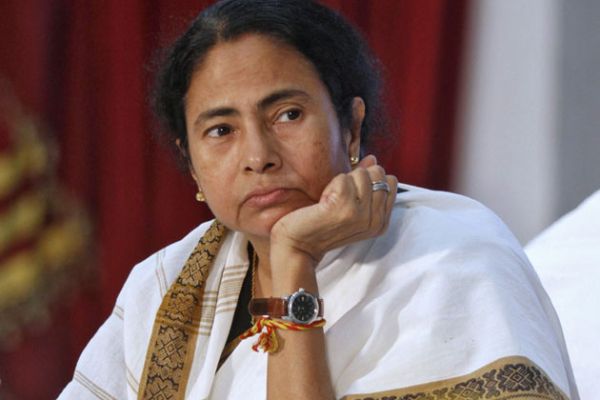
by admin | May 25, 2021 | Economy, News, Politics

Mamata Banerjee
Kolkata : Taking a dig at the central government on GDP numbers, West Bengal Chief Minister Mamata Banerjee on Thursday said “effects of note ban scam” and “unplanned” implementation of Goods and Services Tax (GST) continue to damage India’s economy.
According to official data released on Thursday, gross domestic product (GDP) at constant prices in the second quarter of the current fiscal was estimated at Rs 31.66 lakh crore, as against Rs 29.79 lakh crore in same period of last fiscal, showing a growth rate of 6.3 percent.
“GDP figures out. Again no growth. No jobs. Effects of note ban scam & unplanned GST continue to damage economy. Only talking. No performance,” Banerjee said in a tweet.
“Last year Q2 GDP growth was 7.5 per cent and this year it is 6.3 per cent. This Govt only bhashan, no action,” she added.
—IANS
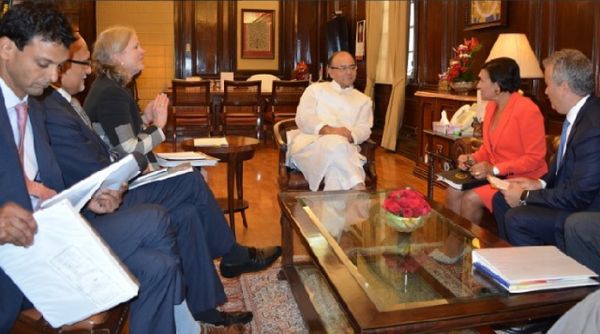
by admin | May 25, 2021 | Economy, News, Politics

Arun Jaitley
New Delhi : Lauding the upward movement of the GDP number for the second quarter of 2017-18, Finance Minister Arun Jaitley said the rise in growth after five quarters marks the reversal of the trend and the economy will witness high growth rates in the coming quarters.
“Last five quarters have witnessed downward trend. The 6.3 per cent rise during Q2 of 2017-18 marks the reversal of that trend. This additionally indicates that the impact of demonetisation and Goods and Services Tax is now behind us and hopefully in the coming quarters will take an upward trajectory,” Jaitley said at a press meet here on Thursday.
He said while this was broadly an initial analysis of the figures, “hopefully we can take to higher growth rate in the coming quarters.”
Jaitley said if one looked at the overall picture since May 2014, out of 13 quarters the economy clicked 7 per cent growth eight times. “We have fallen behind 6 per cent only once. This marks a reversal and it has been largely enabled by manufacturing while investment has moved up. These are the two significant features.”
Official data released revealed that a rise in the manufacturing sector’s output pushed India’s growth rate higher to 6.3 per cent during the second quarter of 2017-18 breaking a five quarters slump.
On a sequential basis, India’s GDP growth for Q2 of the current fiscal went up to 6.3 per cent, from 5.7 per cent reported during the first quarter of 2017-18.
In a statement the finance ministry said the real GDP growth for the second quarter of fiscal 2017-18, just released by the CSO, is estimated at 6.3 percent, a substantial increase from 5.7 percent in the first quarter.
Real Gross Value Added growth has shown a similar increase from 5.6 percent in the first quarter to 6.1 percent in the second quarter, despite a deceleration in agricultural growth from 2.3 percent in the first quarter to 1.7 percent in the second.
The deceleration in overall growth witnessed since the first quarter of the last fiscal year has been reversed, the statement added.
“The acceleration in growth this quarter has been helped by a rapid growth in manufacturing which increased from 1.2 percent in the first quarter to 7 percent in the second quarter. Robust growth of 7.6 percent in electricity and other utilities, and 9.9 percent in trade, transportation and communications also powered this acceleration,” the ministry said.
Overall, the services sector recorded a growth of 7.1 percent in the second quarter.
It stated the rate of growth of gross fixed capital formation has also increased from 1.6 percent in the first quarter to 4.7 percent in the second quarter. Real private consumption growth has broadly held steady at 6.5 percent.
“In summary, the economy now seems to have weathered the transitional challenges experienced earlier in the year and appears poised for a durable recovery going forward.”
—IANS





